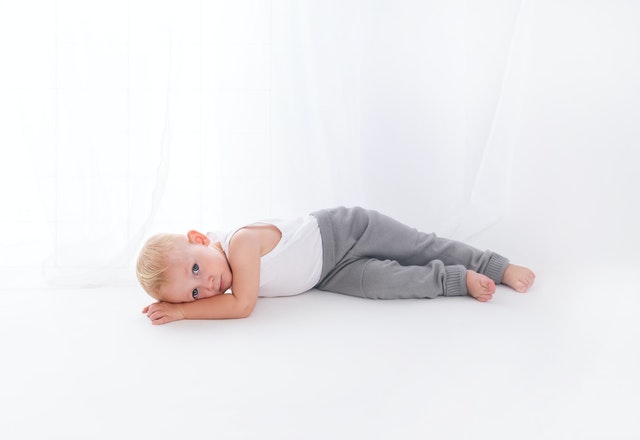Parenting Multiple Kids, The Ups And Downs
Baby milk, book bags and teenage dramas. Parenting four kids on five hours sleep.
Today’s The Day
I am huge. I am scared. Today’s the day we welcome baby number four into the world. I am grateful my mum is here. She helps me keep myself together. Even at my age I don’t want my mum to think my parenting skills are on the floor and I’m flaky. Hubby is already in the car and the engine is running. He’s the calm type so I know he’ll not start beeping the horn or shouting for me to hurry up. I take advantage and take my time. I am fussing over my 16-month-old, making sure Mum has all the instructions and my 14-year-old son is sorted. The date has been in my diary for weeks, but I am still not ready. I cluck, and cluck around them all some more. Kisses and hugs are done and so, almost reluctantly, I heave my massive body into the passenger seat.
Parenting Multiple Kids Means Your Head Is Always Busy
Hubby drives slowly and deliberately. There’s nothing new in that, he always drives slowly and it usually sends me potty although it doesn’t today. My mind is preoccupied, not with the scary prospect of birthing a baby, but with my girl. My beautiful, 15-year-old who is currently aboard a flight to Sri-Lanka. Why today of all days? Will she be ok and how will I know if she lands safely? Did she remember to pack her charger? Is she sat next to someone nice? It is always like this.
My mind is constantly thinking of one of them and adding another into the mix will soon make my head an even busier place to hang out. This is the absolute essence of being a mum of four. A perpetual, underlying anxiousness about each child without the possibility to be everything to each one of them at the same time. Parenting teens is hard. Parenting toddlers is also hard. I reason that I can’t do anything about the flight and it would be stupid to call Mum and check she has gotten the hang of the milk prep machine. Worrying doesn’t help, that’s what ‘they’ say isn’t it? So, I resolve to focus on the new baby.
About to Deliver And All I Can Think About How The Other Kids Are
I waddle, like a duck, along the long corridors with their coloured stripes navigating the sick and the infirm to where they need to be. Not that I am either. It’s a good 5 minutes until we reach the labour ward and the familiar smell and the bright lights hit me hard. Butterflies invade me immediately. I might be an ‘old hat’ at this baby business, but I’ve not had a planned birth before and I am nervous. We get checked into Hotel Hospital and I wonder if the boy caught the bus on time and ate his breakfast before leaving, or if he decided to grab crisps and chocolate from Tesco’s on the high street, which he knows I’d hate?
Parenting Multiple Kids Means Multiple Responsibilities And Worries
We know we are having a boy and we have chosen his name. We didn’t find out with the others but something about being pregnant six months after the birth of the last one drove the need to be practical rather than romantic. Thirty-nine weeks later and he is here. He is beautiful and I feel like it is the first time I have done this. I am overwhelmed by love and although I can’t hold him, Hubby places him close to my face and I nuzzle him. I am in love with this perfect little thing. He has red hair, just like his big sister. My mind immediately wanders. Has she landed yet? Parenting responsibilities and worries never leave us.
Juggling Is A Mandatory Art When You Are Parenting Multiple Kids
With a blink of an eye, we are back to reality and I am knee deep in everyone talking at me at once. I often think of my mummy job as being like a sign-post. 24/7 trouble-shooting and looking for solutions to teen and toddler problems. Why weren’t they born with a parenting guide? An additional baby doesn’t make that much difference at this stage. I carry him everywhere whilst wiping pureed foods off the walls, signing permission slips, looking for lost school planners, playing with brightly coloured plastic toys that make way too much noise, listening to teenage dramas and making copious amounts of coffee, my drug of choice to get me through the madness.
A Balance Can Be Found For The New Reality
In the last three years there has never been a time where all four children were swimming harmoniously along the river of life at the same time. There’s always one that needs more of me than another. Learning to prioritise is the only way to keep the ship afloat, and sometimes I am just relieved that we got through the day. Matching socks are a thing of the past along with ironed clothes and clean floors. I have replaced them with a house full of love, the ability to rock and roll on 5 hours sleep and have ‘winging’ it down to a fine art.
Raising and parenting four humans is a tough gig and messing up is inevitable; but there is no better reward than seeing your kids happy with themselves, with you and with each other. Worry you will, but the joy will always be worth it.





